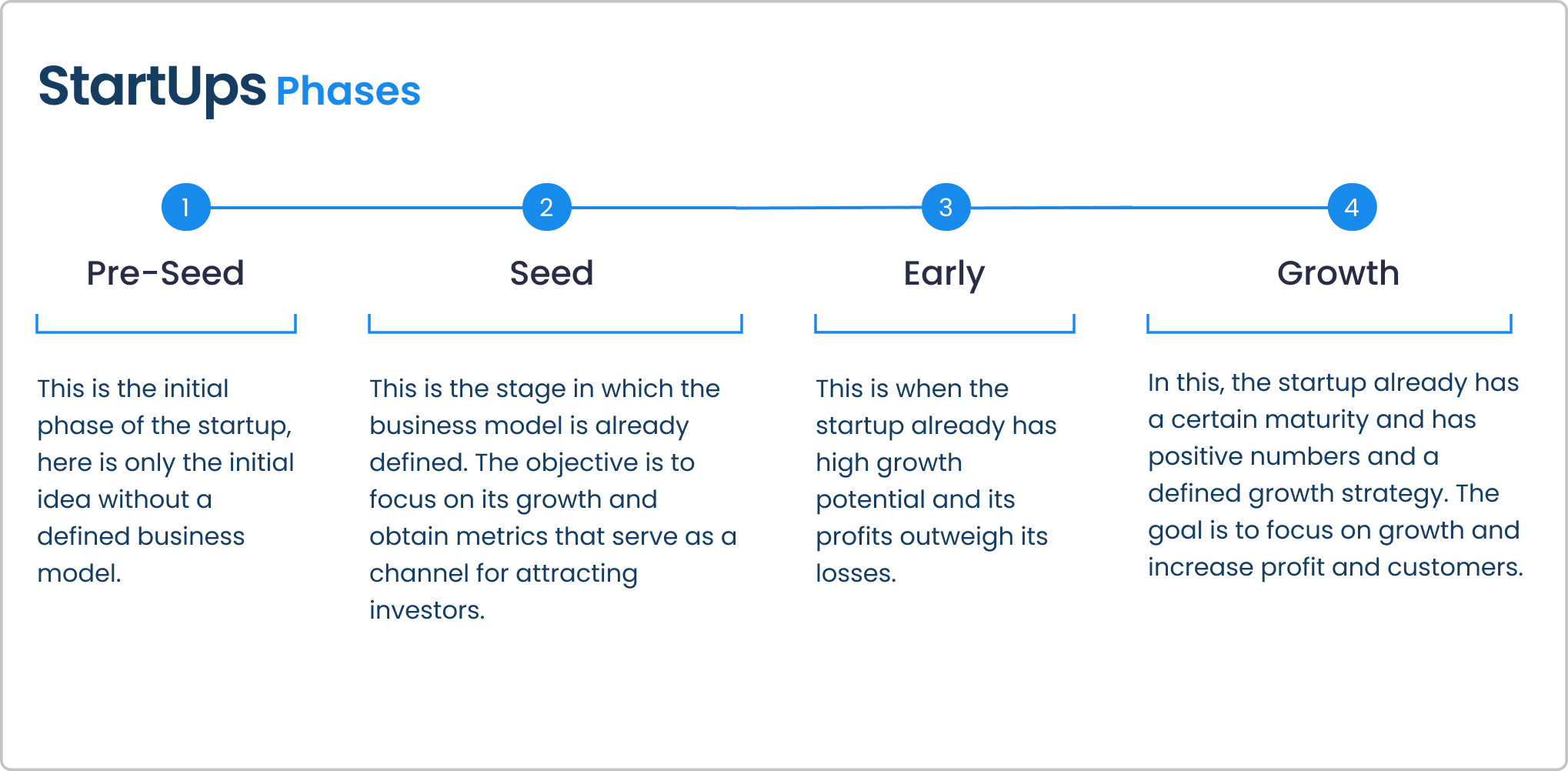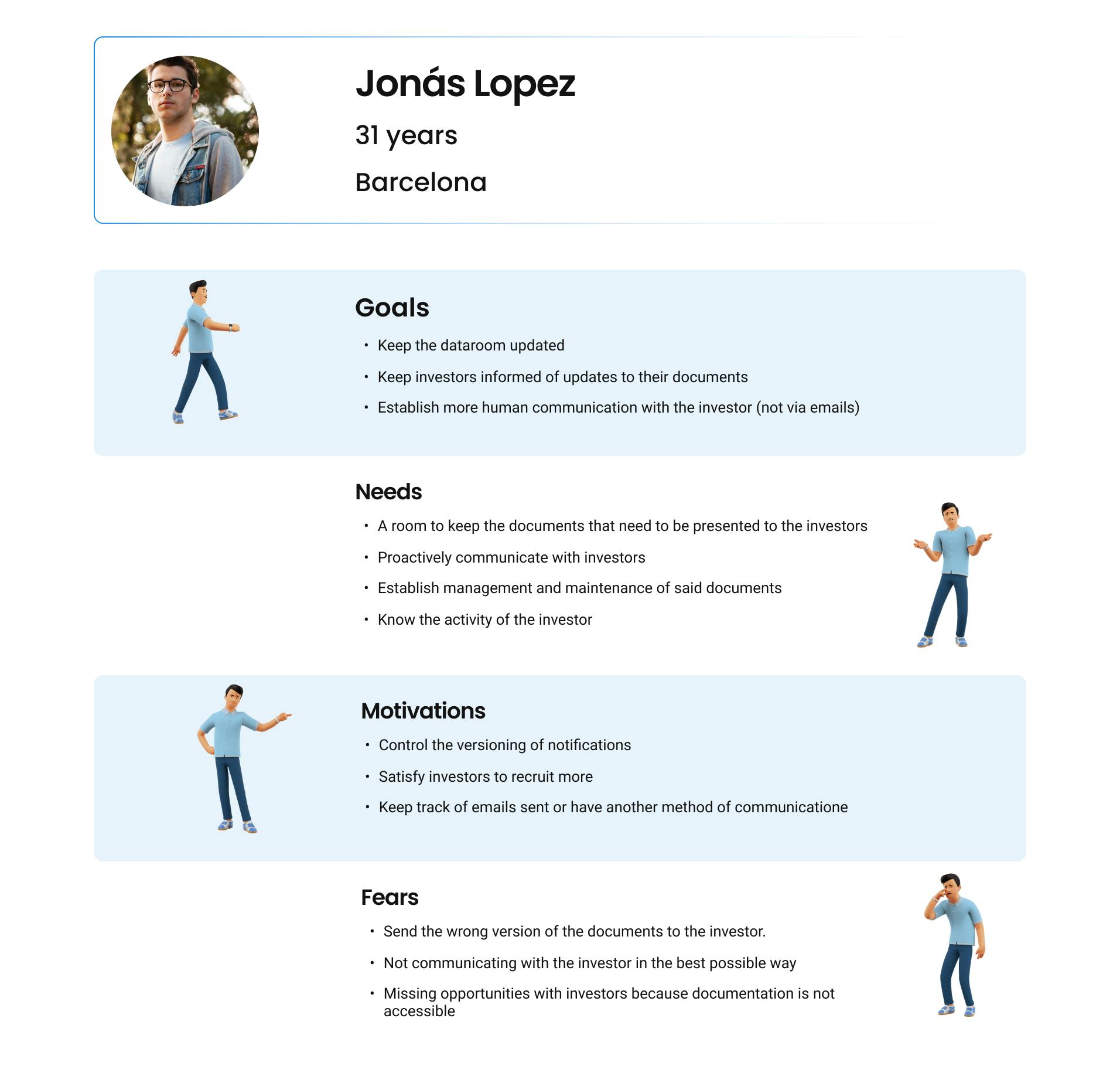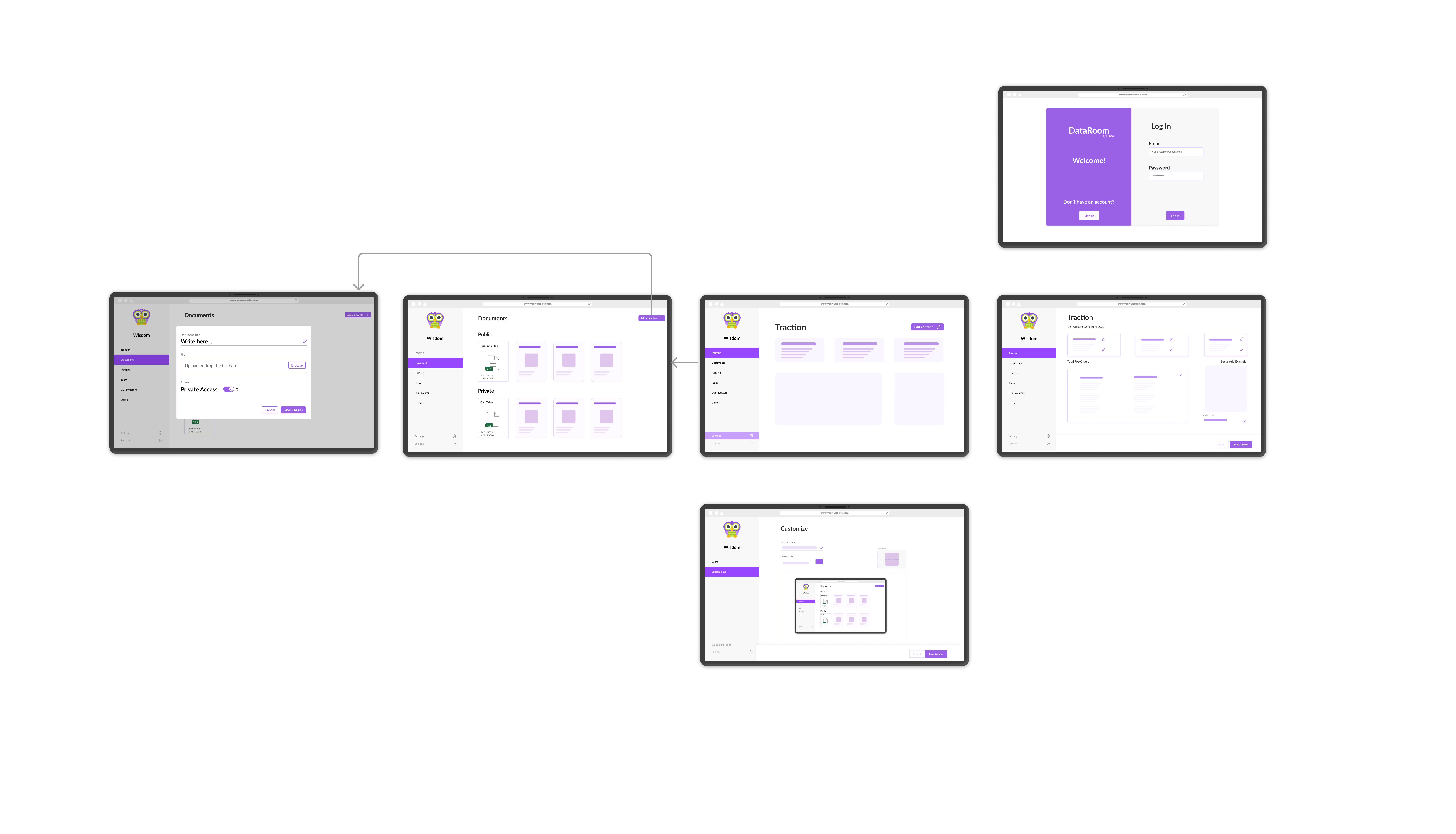From a very raw initial product, we deliver an improved proposal to our customers within 4 weeks, with which they are fully satisfied and which we propose to implement as the next stage of the product.
Understand the value of the product and the goals of the project as a starting point
The DataRoom is a product developed by Flinco to help startups improve the relationship between founders and investors during the fundraising process by making it easier for investors to visualize and check critical documents.
Flinco relied on Ironhack to identify the project's needs and create a user-centric, customizable offering.
Direct the focus of the project to the real needs of the stakeholders
At the team's first meeting with the product's founders, we did not see the task statement reflect the needs on which we should focus our work.
For this reason, based on the information we deepened during this meeting, we reconsidered the focus of the problem raised in the document and received satisfactory feedback from the stakeholders.
To find a real solution, you need a real need
Delimiting each phase of the project in just 4 weeks
We plan each phase with a roadmap to define the project resources within the established timeframe (4 weeks).
Thanks to this planning, we were able to define the necessary availability of users for primary research and the availability of stakeholders to receive feedback on the progress of the project.
On the other hand, we define Design Thinking as the working method intended for this project.

Knowing the context of the product and defining the path of research
No one on the team knew anything about the startup world, and in order to direct the research toward valuable insights for the customer, it is necessary, as with all projects, to "soak up" information about the context of the product.
Given the stage the startup product is at, we decided to conduct exploratory research and defined the following hypotheses and objectives.
Hypothesis
- It is a problem for users to share documentation by mail
- Users (founders) have no way to manage the status of documentation
Objectives of the investigation
- Determine the key issues in the founder-investor relationship in fundraising.
- Identify the level of privacy in the documents exchanged between founders and investors
- Detail information management to facilitate the process of raising investment
- Capture improvements in the usability of the product
Findings from the investigation
Understanding the niche in which the product is located
Let us put ourselves in context for those who, like us, are unfamiliar with the world of startups, investors, etc.
StartUp: These are emerging companies that usually have a high technological component that generally supports an innovative idea.

After explaining the phases of StartUps, DataRoom by Flinco tries to solve the difficulties that arise in the first two phases (Seed/Pre-Seed).
We apply to benchmark to understand what other products do
After applying the benchmark to products like Google Drive, Ideals, Gitbook, and Readme, we found the following:
- Other products allow the user to know who viewed the content
- The ease with which the user can customize the visualization of the space
- One of the differentiating elements of the data room is how this information is displayed
Understanding users' needs and concerns through interviews
We conducted video interviews with 6 startup founders and learned a lot:
- What is your process for finding investors for your company?
- We determine your main problems
- What channels were used to cultivate relationships with potential investors?
Quotes
These are some phrases:
Using email is a bit messy because context is lost in the long run, especially when multiple people are involved. Roberta Howe
We try to contact investors from the beginning, up to 6 months, or until we get the investment we want. Javier Arias
It is very important to maintain communication between founders and investors. The process has a human factor when you know the person. Daniela Lima
Context of this

Thanks to the information obtained at this stage, we can create a profile that meets the needs of the investigation.
Research Conclusions
Find out the results and suggestions
Lack of centralization in documentation sharing. Centralized location where users have access to documentation.
Lack of version control of documentation. Only the most recently uploaded version of the document can be accessed
Need to know if investors have seen updated documentation. Metric that indicates whether investors have seen the most recently uploaded document
To present these results in a format that facilitates empathy with the user, we create the following user persona:

After the research, we defined a pattern of concerns that users shared and that we specified in the following problem statement:
“Startup founders in the pre-seed/seed phase need a place to centralize a set of predefined information to facilitate information and communication with the potential investor.”
If we had to put into words the value that the product offers, we would say that:
“Dataroom by flinco is a centralized space where you can manage the documentation of seed/pre-seed stage startups and make it accessible to investors. You can also establish communication and keep platform users updated, which facilitates the process of attracting investors.”
We have found that the user needs a central location for sharing documentation where they can control access, know what the investor has seen, and update the information to keep the investor informed.
For this we have defined the following functions:
- Dataroom
- Updates control
- Roles management
- Notifications generator
- Send emails
- Roles and access management
- KPI’s
- Documents management ( CRUD )
- Initial setup

In the end, we defined an interactive product that met their needs

Like any product, it needs a continuous improvement strategy
- Research the user profile of investors to define the needs of those users.
- Run tests with users to validate and iterate the proposal
- Generate notifications to inform users of changes to documentation.
- Develop a feature that allows investors to invite other investors.
This is what we have learned as a team in this project
- Become knowledgeable about the market in which the product is located in order to guide the project to the best possible result.
- Align the project with the actual needs of the customer rethinking the brief
- Ensure availability of (very busy) users, and make the most of time to secure research insights
- Bring the greatest possible value to the client, knowing how to guide the research with the available resources.

